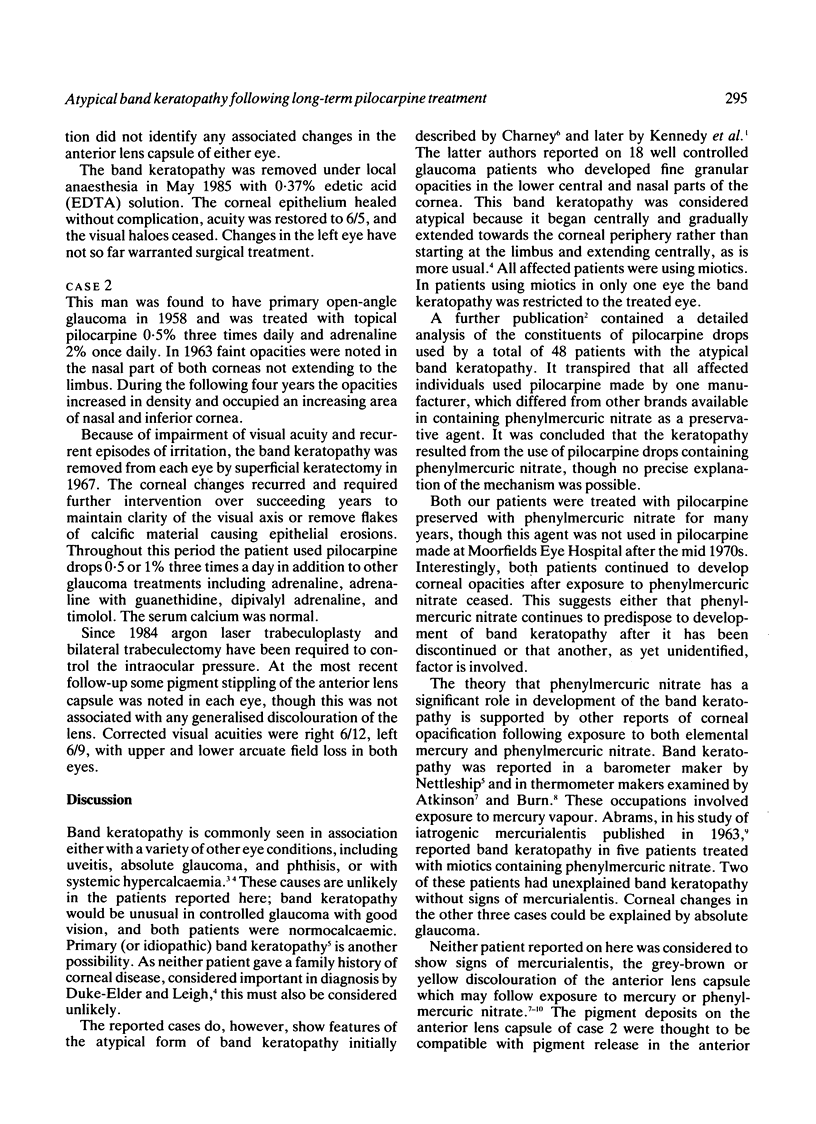Abstract
Two patients with an atypical form of band keratopathy following long-term pilocarpine treatment are described. The keratopathy is thought to have resulted from the presence of the preservative phenylmercuric nitrate in the pilocarpine drops. Symptoms of reduced acuity, visual haloes, and recurrent epithelial erosions were relieved by removal of the opacities.
Full text
PDF


Images in this article
Selected References
These references are in PubMed. This may not be the complete list of references from this article.
- ABRAMS J. D. IATROGENIC MERCURIALENTIS. Trans Ophthalmol Soc U K. 1963;83:263–269. [PubMed] [Google Scholar]
- BURN R. A. Mercurialentis. Proc R Soc Med. 1962 Apr;55:322–326. [PMC free article] [PubMed] [Google Scholar]
- GRANT W. M. New treatment for calcific corneal opacities. AMA Arch Ophthalmol. 1952 Dec;48(6):681–685. doi: 10.1001/archopht.1952.00920010693002. [DOI] [PubMed] [Google Scholar]
- Kennedy R. E., Roca P. D., Landers P. H. Atypical band keratopathy in glaucomatous patients. Am J Ophthalmol. 1971 Nov;72(5):917–922. doi: 10.1016/0002-9394(71)91688-6. [DOI] [PubMed] [Google Scholar]
- Kennedy R. E., Roca P. D., Platt D. S. Further observations on atypical band keratopathy in glaucoma patients. Trans Am Ophthalmol Soc. 1974;72:107–122. [PMC free article] [PubMed] [Google Scholar]



